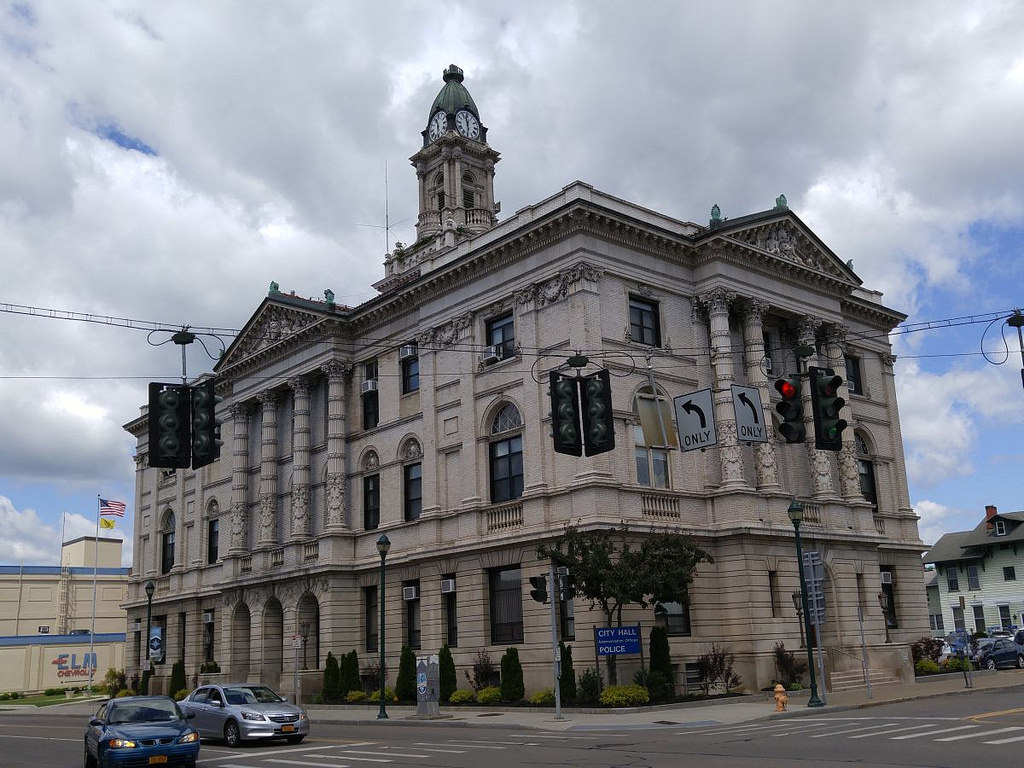Our streets could soon be getting safer in the city of Elmira and Chemung County.
That’s because the city of Elmira and town of Southport are among the communities that have taken positive steps forward recently in adopting Complete Streets policies and designs in hopes of making our streets safer for bicyclists, motorcyclists, and pedestrians as well as improving traffic flow.
Elmira City Council voted unanimously recently to adopt the program, which is in compliance with state law and the state Department of Transportation guidelines. According to a 2011 state law, state, county, and local agencies must consider all users’ convenience and mobility, not just the needs of motorists, when planning transportation projects that receive state and federal money. The Southport Town Board had previously approved it.
Chemung County Planning Commissioner Nicolette Wagoner and county Public Works Commissioner Andy Avery, who wrote the proposal that was approved by Elmira council members, showed real vision for a safer future for all people in drafting and supporting this policy.
Complete Streets, adopted as law in New York State, targets the improvement of transportation options in all communities for residents of all ages and abilities. That means all street construction and reconstruction projects need to be accessible to people with disabilities and safe for everyone, regardless of the method of transportation.
Complete Streets is the work of Smart Growth America, founded in 2000, to help communities plan smarter and safer development and today is a leading advocate for federal programs that support neighborhood development.
According to Smart Growth America, Complete Streets:
- Improves safety while incomplete streets put people at risk.
- Promotes good health while incomplete streets restrict physical activity.
- Makes for a good ride on mass transit while incomplete streets are a barrier for riders and good service.
- Improves mobility for older Americans while incomplete streets are a problem for older Americans.
- Helps people with disabilities while incomplete streets impede livability.
- Stimulates the local economy by steering people to mass transit, which pays a “green dividend,” allowing residents to spend their money in other ways in the community. This happens in cities of all sizes.
- Is equitable streets for everyone, regardless of age, ability, ethnicity, income or travel mode, while incomplete streets are dangerous, especially in low-income communities that are disproportionatey affected by unsafe streets. In counties where more than 20 percent of households have incomes below the federal poverty line, the pedestrian fatality rate is 80 percent higher than the national average, the report says.
- Helps keep kids save while incomplete streets are a barrier for children: fewer children riding bikes to school and increased childhood obesity rates are among the outcomes.
- Fights climate change instead of incomplete streets hampering climate change strategies. We need more people walking, riding bikes, and taking mass transit to work and fewer motorists driving their own cars as carbon emissions continue to soar.
Wagoner, the county planning commissioner, told the Star-Gazette that the program isn’t a mandate but it encourages communities to look at all users when planning street projects.
“This shows Elmira cares about all modes of transportation, making roads safe for vehicles, pedestrians, and bicyclists,” she said. “It’s not a requirement but it’s a nice thing to do, and it helps us when we fill out applications for grant funding. For the federal aid we receive, DOT requires you do Complete Streets.”
In the past, Wagoner said, cities were designed with wider streets to favor automobiles. “We have to fix the mistakes that were made 40 years ago. We’re talking about making crossing distances shorter, talking about where to put crosswalks. I think adding on-street parking will show traffic down.”
She pointed to East Water Street, from Madison Avenue east to the Interstate 86 exit ramp, as an example of a street with little or no on-street parking. Because of the wider street and few if any parked cars, motorists tend to go faster. More parkers will slow drivers.
Many streetscape improvements, including work toward reopening the Lake Street Bridge for pedestrians only, are in the planning stages for 2019 and 2020 in Elmira, she said.
“We want to see pedestrian and bicycle accidents go to zero,” she told the Star-Gazette. “Elmira is flat. It should be very walkable.”
Thanks for reading,
Jim
Managing Partner
Best Lawyers’ “2015 & 2017 Lawyer of the Year”





